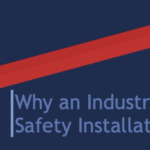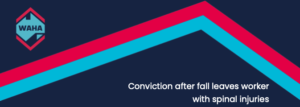
Background
There have been numerous requests for advice as to the status of AS/NZS 5532:2013, the Australian and New Zealand Standard for ‘Manufacturing requirements for single-point anchor device used for harness-based work at height’. This compliance statement has been developed to clarify the situation given the apparent confusion regarding this standard. AS/NZS 5532:2013 was created to supplement the AS/NZS 1891 series, to standardise requirements for manufacturing and testing of single point anchors, exclusively for the protection of personnel.
Note that AS/NZS 5532 is a manufacturing standard; it does not address ongoing inspection, proof loading and maintenance and only addresses installation by way of specifying system design and installation information that is to be supplied with the anchors.
Status
There has been misunderstanding that AS/NZS 5532:2013 is under review and fall arrest anchors do not need to comply with this standard. After the release of the Standard in 2013, in 2015, a review process was announced to take place based on industry feedback.This process has since lapsed and so the Standard remains in place, as-is. Therefore manufacturers of fall arrest anchors, claiming compliance and certification to AS/NZS 5532:2013, must conform to all requirements of the Standard.
Requirements
For a single-point anchor device to be compliant to AS/NZS 5532:2013, it shall meet the performance requirements and test methods as well as the marking, labelling and packaging requirements specified within the Standard.
The anchor device must be subject to and pass both the dynamic and static tests to comply with the performance requirements.
Additionally, to ensure the rating of the anchor is suitable to perform in its installed state, testing of the anchor must be done on the substrate/structure that it is intended to be fixed to. This is because some anchors may be able to withstand higher loading when tested on a solid structure then it would on the substrate to which it is intended to be installed. Testing of the anchor to simulate its intended performance in the ‘as installed’ configuration is imperative and must be conducted both dynamically and statically in the proposed direction of use. The manufacturer must be able to provide evidence of the testing of the anchor on the fixed substrate, not just of the anchor itself.
Exposition
Due to the varying performance of roofing types, it therefore follows that testing must to be performed on each type of roof substrate. Detailed installation instructions shall be provided by the manufacturer with the anchor device, showing the specific installation requirements for each roof substrate. E.g. additional fixings may be required to ensure the substrate can withstand the load rating.
AS/NZS 5532:2013 is not applied retrospectively, therefore all anchors installed prior to the publication in October 2013 should instead comply with the requirements of AS/NZS 1891.4:2009.
AS/NZS 5532:2013 is a manufacturing standard and does not address on-going inspection and maintenance. Inspection and maintenance criteria based on AS/NZS 1891.4:2009, including annual load testing of glued-in (chemical) and friction anchors, shall continue for all installed anchors.
Where anchors are found to be damaged or not to have been installed in accordance with the manufacturers’ instructions (e.g. roof mounted anchors with insufficient fasteners or installed in roof sheeting that is thinner than the specified minimum) these anchors must be made compliant with the manufacturer’s instructions or replaced.
CONCLUSION
WAHA’s role as a group of industry professionals is to ensure that current standards are maintained, to respond to height safety issues and to assist in the process of creating higher industry standards across products, training, installation and maintenance, based on progressions in the height safety industry.
WAHA recommends the use of products that are third party certified by a JAS-ANZ accredited certification body. Third party certification provides independent oversight and auditing. Compliance with the AS/NZS 5532 Standard, as well as all others for fall protection, are not mandatory by Regulation, but form part of the body of knowledge of industry. Such Standards are also referred to in Codes of Practice and can be referred to in legal cases and workplace investigations to assess the contribution that product design and performance has toward accident outcomes.
We strongly recommend that this advice is taken on by all installers, manufacturers, operators and building owners (PCBU’s).
Note: SafeWork NSW recently amended their advice to the community on the AS/NZS 5532 standard. You can read their fact sheet here:






